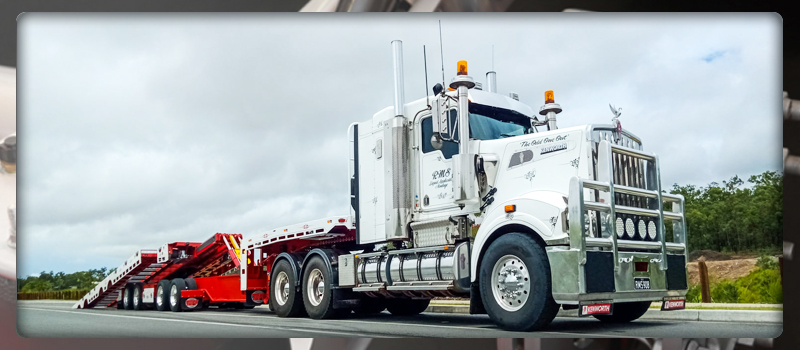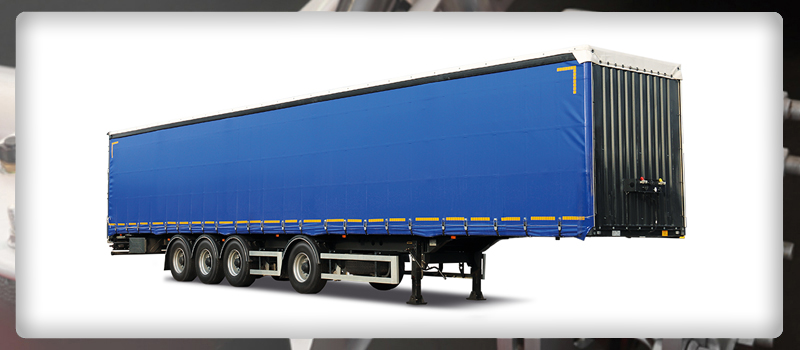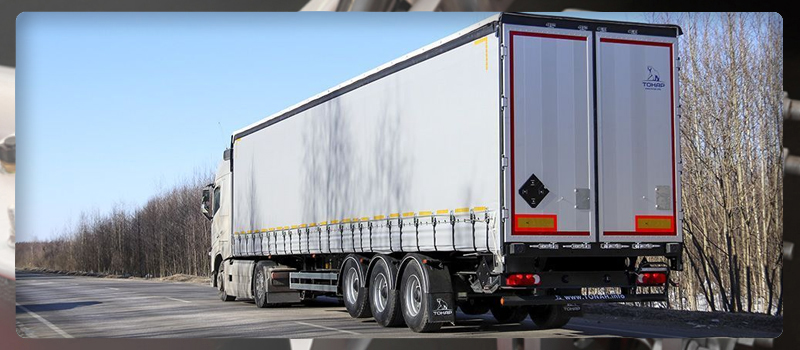History of Air Braking
Learn more about air disc brake calipers' history.
The air braking system was originally created for the railway vehicles seeking to improve their braking responsiveness and safety and avoid the all too frequent train crashes. Following a number of improvements and developments of the original model and once their effectiveness had been proven, the air braking systems started to be applied in the road vehicles as well.
Early Train Brakes
The first train brakes were very simple. To stop the train, you blew a certain pattern with the engine whistle and brakemen would jump from carriage to carriage setting handbrakes. The next generation of brakes added a compressor to the locomotive, and a brake pipe running the length of the train, connected between carriages with gladhands, which were symmetrical ‘non-gendered’ connectors that were latched together by hand and would separate by themselves if pulled on. The brake pipe was connected to an air cylinder on each carriage, which pulled on the handbrake chain when the brake pipe was pressurised.
In other words, the brakes went on when the brake pipe was charged with air. This worked much better than brakemen, but it still took a long time to pump all that air back to the cars. And, all it took was a parted hose or other failure anywhere in the brake system to cause the system to fail entirely.
Westinghouse's Invention
The railway air brake was invented by George Westinghouse (the founder of the Westinghouse Air Brake Company – WABCO) in New York in 1869. It was based on a triple valve which, along with a reservoir on the carriage, inverted the behaviour of the direct air brake: charging air into the pipe charged the system and released the brakes, and draining air from the brake pipe applied the brakes. This system was a lot more responsive and fail-safe, and thus became the basis of the modern air brake.
The triple valve attached directly to the brake pipe, then had a connection to the reservoir, and to the brake cylinder. It was called ‘triple valve’ because of its three modes:
Charging
At rest, the Westinghouse brake system has no air in it. So the air brakes in the train must first be charged. As air is pumped down the brake pipe by the locomotive, the triple valve directs it into the carriage's reservoir, where it is held for use in applying the brakes later.
Applying
When the engineer wants to apply the brakes, he sets the brake handle such that air is removed from the brake pipe. When the triple valve sees brake pipe pressure fall, it allows reservoir air into the brake cylinder, and the brakes apply.
Releasing
Once the brakes are applied, an increase in pressure told the triple valve to release the brakes. When it saw an increase, it would vent the cylinder to atmosphere, and start to recharge the reservoir.
Westinghouse's triple valve improved response times because it did not need to move all the air needed to apply the brakes. It only had to move enough air to carry a signal to the triple valve, telling it to apply or release. However, the signal still took a while to move down the brake pipe.
Improvements: Emergency
An Emergency feature was an early addition to Westinghouse's technology. This added a second reservoir and made the control valve more complicated, but it also allowed for a harder application of the brakes. . And, with a propagation feature called "Quick Action", it made them apply very quickly too. ‘Emergency’ adds a fourth mode to the brake system. A rapid decrease in brake pressure signals the valve to immediately start stopping the train. Including the full contents of a second, larger reservoir, called the ‘Emergency’ reservoir. (The original reservoir is now called the ‘Auxiliary’ reservoir. Most freight cars use a duplex reservoir, which are two cast halves separated by a steel plate. The steel plate is shaped like a dome inside, which makes the emergency half of the reservoir larger. A tab sticks out of this steel plate, one side labeled "aux" and the other "emerg" so the sides can be identified.
In normal operation, the emergency-equipped control valve operates just like the original triple valve, except, of course, that it also charges the emergency reservoir. But part of the valve is designed to detect a rapid drop in pressure, which trips the emergency mode. The valve will then dump the entire contents of both reservoirs into the cylinder, and when pressure equalizes, there will be nearly full system pressure in the cylinder, 63 pounds or so on a 70-pound brake pipe pressure. This is as hard as the brakes will go, and will often lock up the axles at low speeds, skidding flats in the wheels. The force of an emergency application can also damage lading or even derail the train! An emergency stop is now the default action almost anytime there's a brake failure. Any rupture in the brake pipe will cause an emergency application, as will a defective brake valve pejoratively called a ‘kicker’ or ‘dynamiter’ (which puts the whole train in emergency.)
The AB Freight Control Valve
The Westinghouse AB control valve is, essentially, the modern brake. It has all the brake features discussed so far. While there have been technological upgrades (‘ABD’ to ‘ABDW’ to ‘ABDX’) the basic packaging is standardized, and worth talking about.
The AB control valve consists of a pipe bracket, to which all piping connections are made, and two control valve portions (the ‘Service’ and ‘Emergency’ portions) which bolt to the pipe bracket with three bolts.
Each of the three pieces weighs about 65 pounds, which is (conveniently?) just light enough to be shipped by UPS. The beauty of the system is its ease of maintenance. The two portions (which are quite complex inside) simply bolt off. Add ten dollars worth of gaskets and filters, and a field diagnostic, and you've done 16-year brake service on a railroad car. The hard part is cutting out the stencil which says "C.O.T.S. 1/4/94" (Clean, Oil, Test and Stencil) The pipe bracket does not just unbolt; there are pipes attached to it. The five pipes are Brake Pipe, Cylinder, Auxiliary Reservoir, Emergency Reservoir, and Retainer.
The last one deserves some explanation. The retainer is a way of "keeping" some of the brake application even after the brakes are released. When an AB brake releases cylinder pressure, it vents it out the "retainer" port. On most cars, this leads to a retaining valve located on the side of the car. The retaining valve retains pressure in the cylinder when the control valve tries to release it. It can be set for "direct", which lets the air out directly, or "retain 10 pounds" which keeps the last 10 pounds of pressure in the cylinder. This is used to descend long grades: with the retainers turned up, the cars will hold ten pounds of brakes even while the brakes are fully released and recharging. More advanced retainers added two more settings: retain 20 pounds, and slow release, which would release fully but took about 90 seconds to do it. On cars that didn't use the feature, a screen was put over the retaining valve port to keep wasps from building nests in the control valve.
More Improvements: the ABD valve
The ABD valve added two features which made brake response faster, but they worked mostly like AB valves, and were, of course, compatible. However, they were completely different internally.
The old AB valve used technology of 100 years ago inside the valve: small pistons moved brass slide valves, aligning or blocking ports to make the valve function. They had to be lubricated with graphite, and there were always problems with scoring and leakage. With the ABD valve, rubber diaphragms (like in a car's fuel pump) replaced the pistons, and sliding shafts with rubber gaskets replaced the brass slide valves. Although they did basically the same thing. Two functional features were added to AB and newer valves: Quick Service and Quick Release. Both manipulated brake pipe pressure to propagate the brake commands more quickly.
Implementing Air Brakes in Road Vehicles
Meanwhile in Germany, a company called Knorr-Bremse was founded by Georg Knor in 1905 and started off by manufacturing brakes for railway vehicles. In 1922, the company commenced developing pneumatic braking systems for commercial road vehicles. Knorr-Bremse was the first European company to develop a new pneumatic system that applied the brakes simultaneously to all four wheels of a truck as well as its trailer. The resultant reduction in braking distances made a significant contribution to improving road safety. By 1925 most larger trucks had all wheel air brakes. In 1949, accelerated by the World War II, air braking became standard on all heavy trucks, tractor-trailers, buses, fire trucks and off-highway vehicles. By 1960, automatic slack adjusters, air dryers, dual brake valves and first generation antilock braking systems were under development.
Anti-lock Braking Systems
Anti-lock braking systems (ABS) can be traced all the way back to the 1920s, when engineers first applied the concept of an automatic override braking system to aircraft brakes. This system served the same purpose as modern ABS, preventing wheels from locking during rapid deceleration, or on low-traction surfaces.
In the 1950s the technology was successfully applied to the motorcycles, and in the 1960s automobile manufacturers began to experiment with ABS systems on passenger cars. American engineers struggled to create an ABS for trucks that would meet the National Highway Traffic Safety Administration (NHTSA) standards. However, in 1978, the German firms Bosch and Daimler-Benz co-developed an ABS technology that begun in the early 1970s, and introduced the first completely electronic four-wheeled multi-channel ABS in trucks.
Since the 1970s, the addition of computer-controlled sensors and a general emphasis on automobile safety has led to a rapid evolution of the effectiveness and popularity of ABS.
Electronic Braking Systems
In 1996, WABCO pioneered the world’s first commercial vehicle electronic brake system (EBS), introduced on the Mercedes-Benz ‘Actros’, followed in 1998 by the complementary trailer electronic braking system (TEBS) for trailers.
The energy for actuating EBS brakes is still provided by compressed air, however air pressure is controlled by the electronic control unit (ECU) to deliver far more responsive, accurate and stable braking. What is more, the vehicle manufacturer can easily alter the modulation characteristics of the treadle via ECU programming to provide the best possible brake ‘feel’. Ideally, the trailer will be equipped with TEBS (Trailer electronic braking system), so the truck’s EBS can then send an electronic signal to the trailer’s TEBS to initiate braking in almost perfect synchronisation with the truck.
Uptake of this revolutionary technology in Europe was nothing short of phenomenal. Most new European heavy trucks and buses now feature EBS, while about half of all new trailers manufactured in EC countries are equipped with TEBS.
Air brake (Road Vehicle)
Air brakes are used in trucks, buses, trailers, and semi-trailers. George Westinghouse first developed air brakes for use in railway service. He patented a safer air brake on March 5, 1872. Originally designed and built for use on railroad train application, air brakes remain the exclusive systems in widespread use. Westinghouse made numerous alterations to improve his air pressured brake invention, which led to various forms of the automatic brake and the subsequent use on heavier road vehicles.
Compressed Air Brake System
Compressed air brake systems are typically used on heavy trucks and buses (Note the difference between pneumatic brakes and pneumatic/hydraulic).
The system consists of service brakes, parking brakes, a control pedal, an engine-driven air compressor and a compressed air storage tank. For the parking brake, there is a disc or drum brake arrangement which is designed to be held in the 'applied' position by spring pressure. Air pressure must be produced to release these "spring brake" parking brakes. For the service brakes (the ones used while driving for slowing or stopping) to be applied, the brake pedal is pushed, routing the air under pressure (approx 100-125psi) to the brake chamber, causing the brake to reduce wheel rotation speed. Most types of truck air brakes are drum units, though there is an increasing trend towards the use of disc brakes in this application. The air compressor air draws filtered air from the atmosphere and forces it into high-pressure reservoirs at around 120 PSI.
Most heavy vehicles have a gauge within the driver's view, indicating the availability of air pressure for safe vehicle operation, often including warning tones or lights. Setting of the parking/emergency brake releases the pressurized air pressure in the lines between the compressed air storage tank and the brakes, thus actuating the (spring brake) parking braking hardware. An air pressure failure at any point would apply full spring brake pressure immediately.
In the Florida CDL Handbook, this process is described. Here is the section describing the service brake:
The brake Pedal
Brakes are applied by pushing down the brake pedal. (It is also called the foot valve or treadle valve.) Pushing the pedal down harder applies more air pressure. Letting up on the brake pedal reduces the air pressure and releases the brakes. Releasing the brakes lets some compressed air go out of the system, so the air pressure in the tanks is reduced. It must be made up by the air compressor. Pressing and releasing the pedal unnecessarily can let air out faster than the compressor can replace it. If the pressure gets too low, the brakes won't work.
These large vehicles also have an emergency brake system, in which the compressed air holds back a mechanical force (usually a spring) which will otherwise engage the brakes. Hence, if air pressure is lost for any reason, the brakes will engage and bring the vehicle to a stop.
Design and Function
A compressed air brake system is divided into a supply system and a control system. The supply system compresses, stores and supplies high-pressure air to the control system as well as to additional air operated auxiliary truck systems (gearbox shift control, clutch pedal air assistance servo, etc.).
Supply System
The air compressor is driven off of the engine either by crankshaft pulley via a belt or directly off of the engine timing gears. It is lubricated and cooled by the engine lubrication and cooling systems. Compressed air is first routed through a cooling coil and into an air dryer which removes moisture and oil impurities and also may include a pressure regulator, safety valve and a smaller purge reservoir. As an alternative to the air dryer, the supply system can be equipped with an anti freeze device and oil separator. The compressed air is then stored in a reservoir(also called a wet tank) from which it is then distributed via a four way protection valve into the front and rear brake circuit air reservoir, a parking brake reservoir and an auxiliary air supply distribution point. The system also includes various check, pressure limiting, drain and safety valves
Control system
The control system is further divided into two service brake circuits: the parking brake circuit and the trailer brake circuit. This dual brake circuit is further split into front and rear wheel circuits which receive compressed air from their individual reservoirs for added safety in case of an air leak. The service brakes are applied by means of a brake pedal air valve which regulates both circuits. The parking brake is the air operated spring brake type where its applied by spring force in the spring brake cylinder and released by compressed air via hand control valve. The trailer brake consists of a direct two line system: the supply line (marked red) and the separate control or service line (marked blue). The supply line receives air from the prime mover park brake air tank via a park brake relay valve and the control line is regulated via the trailer brake relay valve. The operating signals for the relay are provided by the prime mover brake pedal air valve, trailer service brake hand control (subject to a country's relevant heavy vehicle legislation) and the prime mover park brake hand control.
Leave words, your message replied in 24hours.
Toget Brake
Brand Vision:"to become the China leading supplier of active vehicle safety systems within the commercial vehicle industry."
At Toget, focus on air disc brake calipers technics, exceeding industry standards is a strict requirement.

Brand names, original numbers, vehicle mark and models are only for reference purposes.







